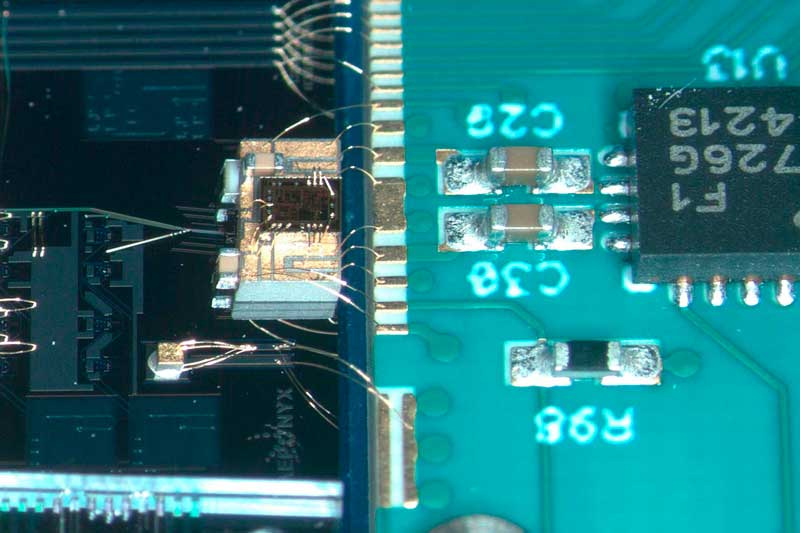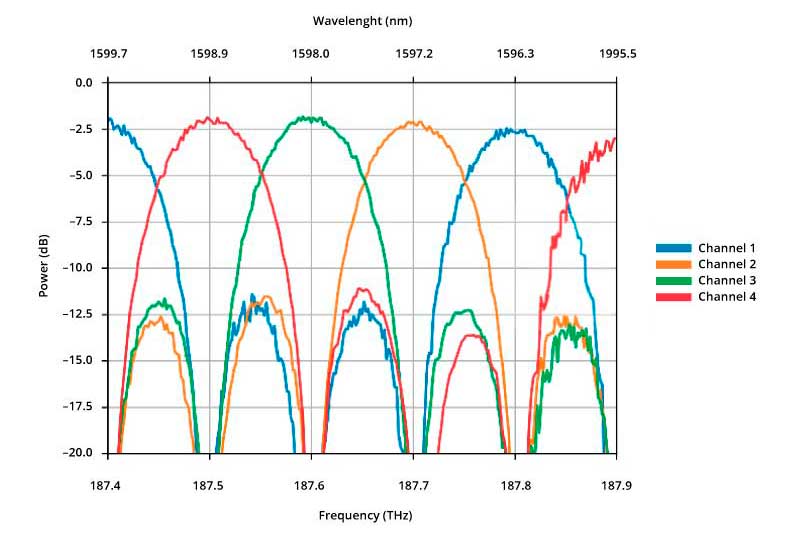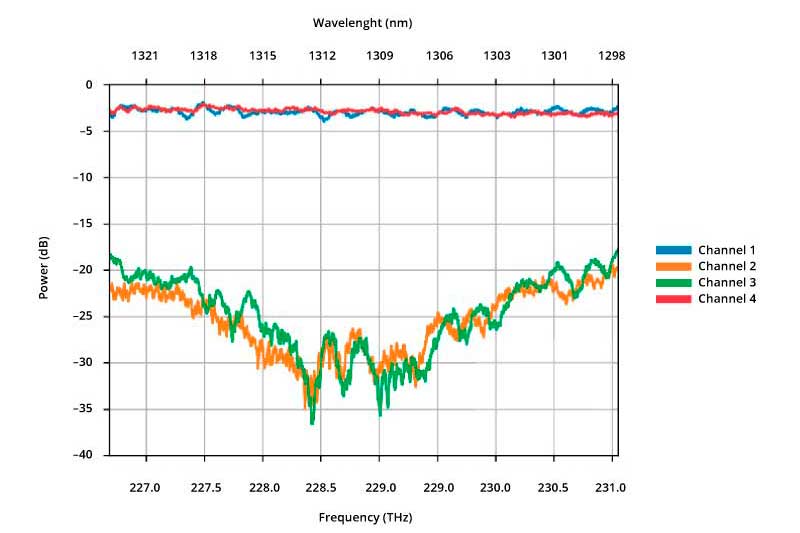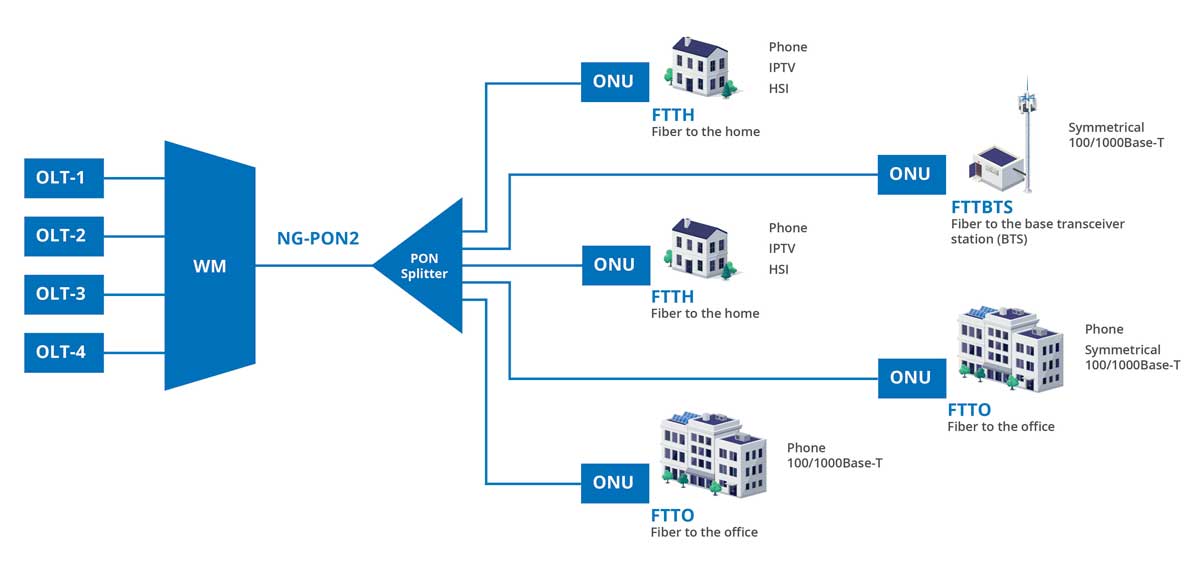Application
Tunable Optical Filtering/Switching

General description
AEPONYX offers a tunable optical filtering/switching (TOF/S) platform combining the low-loss of silicon nitride (SiN) waveguides with an innovative, proprietary design for thermo-optically tuned wavelength selectivity.
These TOF/S support switching times of 5 ms, with a modest 150 mW power consumption and passive insertion losses of 1 to 3 dB. Combining fast switching times with lower power consumption, alongside the naturally low losses of SiN, delivers performance specifications that are only possible using the AEPONYX technology portfolio.
On-chip waveguides
The foundation of AEPONYX’s platform is our extensive background in creating on-chip waveguides with silicon nitride. SiN is well known for having lower propagation losses than silicon but has a reputation for being more complicated to manufacture. Our team of experts have designed the entire fabrication process to produce high yield, highly reproducible photonic circuits with SiN.
A key advantage to our thermo-optical switch over silicon-based photonics is the ability to decouple thermal, optical, and mechanical constraints, which opens the design space. Furthermore, using our close partnerships with mid-volume and high-volume foundries, we perform rapid prototyping that can be seamlessly transferred to market level production. The result is a cost-competitive, low loss photonic circuit that maximizes optical element performance.
Broad compatibility
Our TOF/S are compatible with any telecommunication band (O,C,and L). Our passive wavelength selective switches are on a N port layout (typically 1×4) providing static control on demultiplexed outputs, that is the bias electrical on the filters maintains a constant frequency output for a given channel. Our active switches are in a 4-port design (2×2), performing on-off or X-bar action by varying the electrical bias with 5 ms switching times on a broader spectral span. Higher radixes are currently under development.
Our optical filtering technology has been demonstrated with 100 GHz and 200 GHz channel spacing and a 3 dB bandpass of 15 GHz (100 GHz) and 20 GHz (200 GHz). This platform has demonstrated 10 GB/s data transmission in both the L-band and C band, with O band options under development.
We currently offer this technology either in a hermetically sealed XFP package, or as a free-standing, bare die for OEM applications. Additional packaging options can be supported through customer-specific development.

Figure 1a:
Typical transmission spectrum from a tunable filter centered on NG-PON2 channels 1–4 under scrambled polarization input.

Figure 1b
Recent, preliminary tests results for broadband switching in the O band.
Examples of the TOF’s performance
Figure 1a shows the insertion loss for a static 1×4 DWDM in the L band. The TOF filters 4 incoming frequency bands separated by 100 GHz, each curve represents the insertion loss for one outgoing channel filter. The measurement was made with a polarization scrambled input to demonstrate the device’s performance for both TE and TM polarization.
Figure 1b shows our application of a TOF/S-based 2×2 switch in the O-band. The device performs active switching from output 1 to output 2, and vice versa. Here the performance was optimized for broader band filtering, but narrow band spacing can also be accommodated.

Figure 2:
NG-PON2 – Best example of TOF/S application.


